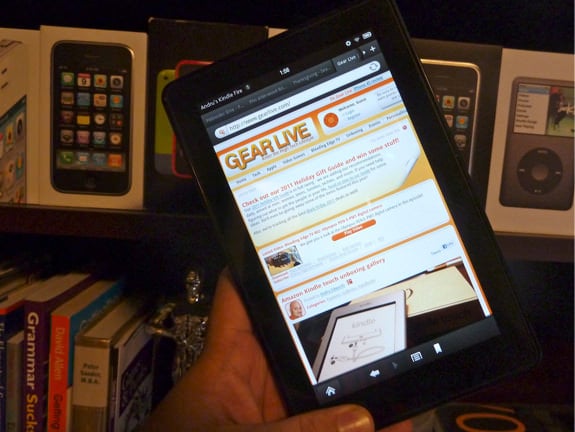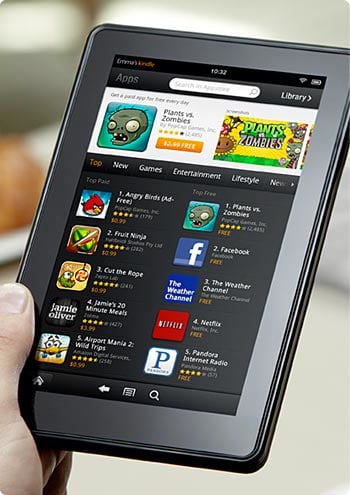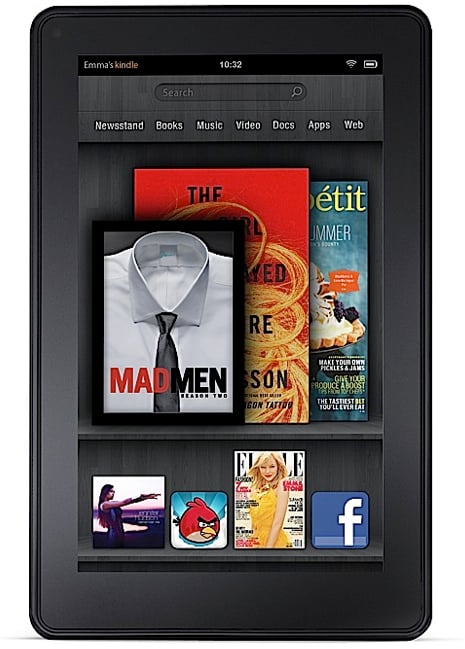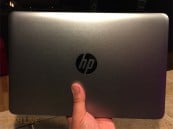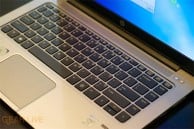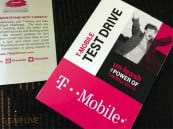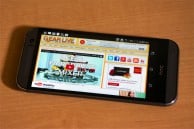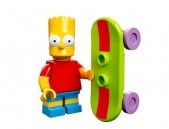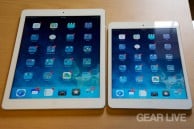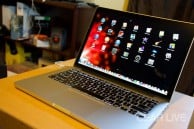Latest Gear Live Videos
2012: The Year everything gets disrupted

Posted by Andru Edwards Categories: Editorial, Features, Handhelds, PC / Laptop,
Normally at this time of the year, I predict tech trends for the New Year. As I think about 2012, I realize that over the next 12 months, the personal computing and consumer electronics industries are poised to see some big disruptions that could change their course for the next five years.
In fact, I believe that when we end 2012, we will look back and realize that it was the most disruptive year we will have had in personal computing in over a decade. In the next 12 months, the market for personal computers of all shapes and sizes will have changed dramatically.
So, what will be the major forces that could reshape the PC business in 2012? There are four technologies and trends in the works that I believe will force the computer industry in a new direction.
The first will be Intel's huge push to make ultraportables 40 percent of its laptop mix by the end of 2012. Although I don't believe it will achieve that goal, especially if ultrabooks are priced above $899, the fact is that ultrabooks are the future of portable computing. Instead of thin and light laptops driving the market as they are now, ultrabooks, which are thinner and lighter, with SSDs and longer battery life, will eventually be what all laptops will look like in five years. The heavier and more powerful laptops that exist now won't go away completely since there are power users who will still need that kind of processing power. But ultrabooks will be the laptops of the future and 2012 will be the first year of their major push to change the portable computing landscape.
There is an interesting twist with ultraportables that could be even more important starting next year: the introduction of ultraportables with detachable screens that turn into tablets. In the past, this hybrid, as it is called, ran Windows when in laptop mode and Android when in tablet mode. But this approach was dead in the water from the start. With Windows 8 tablets ready to hit the market next fall, you will see ultraportables with detachable screens that will run Windows 8 with the Metro UI both on the laptop and in tablet mode. This will bring a level of OS consistency across both device modes and I think that this concept is a sleeper. In fact, if done right, this alone could reshape the traditional PC market in the near term.
Click to continue reading 2012: The Year everything gets disrupted
Advertisement
Sonos 3.6 update brings Slacker Radio, Kindle Fire, Android tablet support

Posted by Andru Edwards Categories: Handhelds, Music, Software,
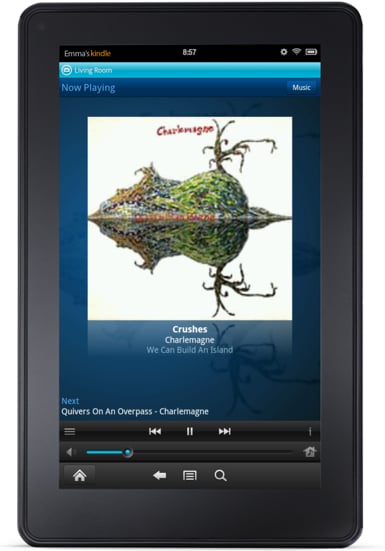
Sonos, makers of the Play:3 and high-end ZonePlayer wireless multi-room music systems, has announced an update to its system software that adds more wireless music streaming options, and lets users control their Sonos systems with their Android tablets.
The most notable feature of the 3.6 software update makes the Sonos Controller app available to Kindle Fire and Android Honeycomb tablets users, letting them use their tablets as remote controls for their Sonos products. The company released the app for Android phones in February, and the Sonos Controller is also available for iOS devices.
The Android tablet app, which can be downloaded for free from the Android Market or the Amazon Appstore, is scaled to take advantage of tablets' extra screen space. It includes enhancements like on-device music library and zone management, alarms that let you fall asleep or wake to your favorite tunes, and Twitter integration, so you can tweet what you're listening to on Sonos from your tablet.
Click to continue reading Sonos 3.6 update brings Slacker Radio, Kindle Fire, Android tablet support
Samsung Galaxy Nexus rumored to launch on December 8

Posted by Andru Edwards Categories: Smartphones, Google, Handhelds, Rumors,
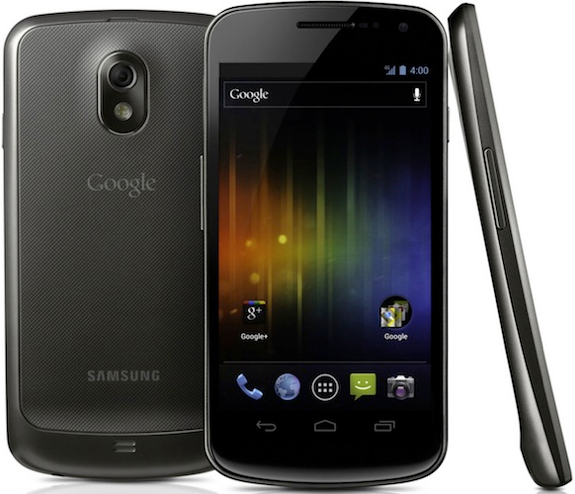
Had we a nickel every time someone projected a U.S. launch date for Samsung's much-anticipated Galaxy Nexus smartphone. We've all seen it. We've read about it. We've watched the phone's international release come and go. We've even posted our Galaxy Nexus review. So when's the big U.S. release, anyway?
Rumors have suggested everything from Black Friday, to Cyber Monday, to just about any November date under the sun for the launch of Samsung's first big Ice Cream Sandwich device (that's Android 4.0, the latest iteration of Google's mobile operating system). The Android website Droid Life is the latest gossiper to jump into the fray, only it's coming armed with evidence that suggests the Galaxy Nexus launch isn't arriving in November after all: Rather, December 8.
The source of the info is unknown, but the allegedly internal documents list a "Launch / End date" for the Samsung Galaxy Nexus as December 8. Although an accompanying description seems to indicate that the date could be reserved for a marking campaign for the device, instead of the smartphone's actual release date, Droid Life has corroborated its first leaked image with a second.
Click to continue reading Samsung Galaxy Nexus rumored to launch on December 8
Samsung Galaxy Nexus and Android 4.0 Ice Cream Sandwich first impression review

Posted by Andru Edwards Categories: Smartphones, Features, Google, Handhelds, Product Reviews, Software,

This is a huge deal. Ice Cream Sandwich is the biggest upgrade to Google's Android OS since Android 2.2 hit in May 2010, and possibly the most important update ever. From what I've seen so far in a day with the Samsung Galaxy Nexus phone, Android users should be demanding their share of Ice Cream—and it should absolutely make a difference in your phone purchases.
Google lent me an international developer unit of the Samsung Galaxy Nexus, the first ICS phone. This isn't the LTE device that Verizon Wireless will be selling in the U.S., but it's roughly the same size and shape with very similar capabilities, so it's a good way to judge what ICS will be like when it hits the USA.
Bleeding Edge TV 403: Amazon Kindle Fire review

Posted by Andru Edwards Categories: Full Episodes, Gizmatic, Features, Handhelds, Podcasts, Product Reviews, Videocasts, Videos,
In this episode we review the Amazon Kindle Fire tablet e-reader (also see our text version of our Kindle Fire review.) Amazon's looking to disrupt the tablet landscape with the Fire, and is pricing it aggressively at $199. The Kindle Fire weighs 14.6 ounces and packs a 7-inch IPS display, dual-core processor, 512 MB RAM, and 8 GB of on-board storage. It runs a forked version of Android that Amazon has customized in a major way. You also get Wi-Fi built-in as well. Purchasers of the Kindle Fire also get a 30-day trial of Amazon Prime, which'll let you get a nice sampling of what the company's Video on Demand service offers.
The browser, Amazon Silk, will be exclusive to the Kindle Fire for the time being, and it aims to speed up web browsing by a significant margin by offloading some of the heavy lifting to the Amazon EC2 cloud servers.
You can pick up the Kindle Fire for $199.
Big thank you to GoToMeeting and JackThreads for sponsoring the show - be sure to check them out! As for JackThreads, we've got exclusive invite codes that give you $5 to use towards anything you'd like.
Amazon Kindle Fire review

Posted by Andru Edwards Categories: Features, Handhelds, Product Reviews,
The Amazon Kindle Fire is the first small tablet that average users can pick up and immediately use, with a simple, clear interface. Then there's the price: Android along with amazing specs for just $199. It's open enough to attract geeks, too. While the user interface occasionally gets sluggish, we're willing to have a bit of patience to get a first-rate tablet for half of what most competitors charge, thus the Kindle Fire is our first Editors' Choice for small tablets.
Design
A solid little brick at 7.5 by 4.7 by .45 inches and 14.6 ounces, the Kindle Fire looks and feels a lot like the BlackBerry PlayBook, but the Fire is smaller in all dimensions. There are no slots or tabs; both the memory and battery are sealed in, and the only interruptions in its smooth, black form are the headphone jack, Power button, MicroUSB jack, and dual stereo speakers. There's no camera, but I've never been sold on the value of tablet cameras anyway. It uses 802.11b/g/n Wi-Fi networks to get online; there's no cellular radio or Bluetooth connectivity.
Turn the Fire on and the 7-inch 1024-by-600 IPS LCD screen lights up. This display is very sharp and clear, but it's also rather reflective. Just like on the Apple iPad 2, you may have trouble reading in bright light because of the screen's sometimes mirror-like gloss. While this is par for the course with tablets, I expected more given the Kindle name. This isn't a dedicated e-reader by any means.
Click to continue reading Amazon Kindle Fire review
Barnes & Noble Nook Tablet ships early

Posted by Andru Edwards Categories: Corporate News, Handhelds,
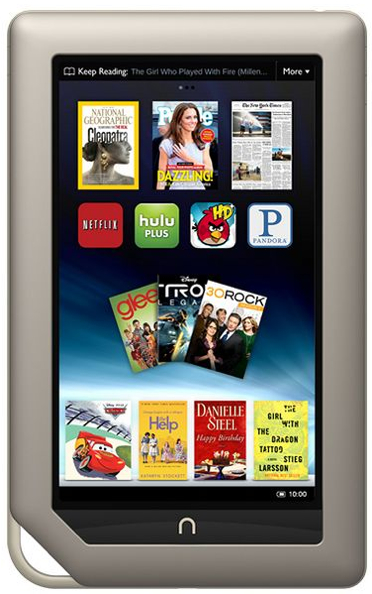
If you pre-ordered a Nook Tablet, you can get your hands on it a bit early. Though Barnes & Noble said the device would arrive on doorsteps and in stores on or around Nov. 17, the company confirmed that it will actually be available as of yesterday.
The device was delivered and available for in-store pickup yesterday. Those who didn't pre-order can start buying the tablet in stores today.
The Nook Tablet includes a 7-inch touch screen with 1024-by-600 display and runs a TI OMAP 4 dual-core processor. The $249 Nook Tablet boasts 16GB of internal storage, expandable up to 32GB via a microSD card and includes access to Barnes & Noble in-store support.
Rival Amazon also shipped its Kindle Fire tablet a day early for shoppers who pre-ordered the device; it was originally scheduled to ship on Nov. 15. During an earnings call last month, Amazon said pre-orders for the Fire exceeded expectations, prompting the company to ramp up production on the tablets. Dave Limp, vice president of Amazon Kindle, also said this week that the $199 Kindle Fire is already the best-selling item across all of Amazon.com.
Click to continue reading Barnes & Noble Nook Tablet ships early
Google Music brings MP3 store, free cloud storage for your tracks

Posted by Andru Edwards Categories: Corporate News, Google, Music, Storage,
Google on Wednesday officially unveiled its music product, dubbed Google Music, which will let users store songs in the cloud for free and buy tracks directly from the Android Market.
Google's Jamie Rosenberg, director of digital content for Android, said Google Music is an expansion of Google Music Beta, introduced earlier this year, making it a "full end-to-end service."
"It's about the cloud, about the Web and about mobile," he said.
Google Music, accessible via music.google.com, is open to everyone in the U.S. now on the Web and will roll out to mobile users in the coming days. Users can store and stream up to 20,000 songs in the Google cloud for free, and add any selections they don't have by buying them from the Google Music store.
Google Music will allow users to share songs with friends, who will be able to play that song in its entirety once.
Google said it has sealed deals with more than 1,000 music labels, including Universal Music Group, Sony Music Entertainment, and EMI, as well as indie labels, like those from Merlin. In all, Google promised access to 13 million tracks, 8 million of which are available now.
Click to continue reading Google Music brings MP3 store, free cloud storage for your tracks
2011 Holiday Gift Guide: Amazon Kindle Fire

Posted by Andru Edwards Categories: Handhelds, Women, Men, Techies, Teens, Under $250, Under $500,
We continue our 2011 Holiday Gift Guide with the Amazon Kindle Fire tablet. This is the Amazon tablet we've been waiting on for months, and it's has finally shipping. Amazon's looking to disrupt the tablet landscape with the Fire, and is pricing it aggressively at $199. The Kindle Fire weighs 14.6 ounces and packs a 7-inch IPS display, dual-core processor, 512 MB RAM, and 8 GB of on-board storage. It runs a forked version of Android that Amazon has prettied up in a major way. You also get Wi-Fi built-in as well.
Purchasers of the Kindle Fire also get a 30-day trial of Amazon Prime, which'll let you get a nice sampling of what the company's Video on Demand service offers. Other services you can access from the Fire include Amazon's Android Appstore, Kindle books, a host of magazines, Cloud Drive, Cloud Player, and the Amazon MP3 service.
You can pick up a Kindle Fire now for $199 on Amazon.
Read More  | Amazon Kindle Fire
| Amazon Kindle Fire
Here’s how to run almost any Android app on the Kindle Fire

Posted by Andru Edwards Categories: Google, Handhelds, Mods / Hacks, Software,
The new Amazon Kindle Fire is a powerful, dual-core Android tablet for only $200. It doesn't have the quarter-million apps from the Android Market, though; by default, you can only load the "thousands" of apps in Amazon's App Store.
But that's OK. If you have an Android phone around, you can use free tools to load almost any Android app onto the Kindle Fire. You don't need to hack, alter, or "root" your phone or tablet to do this, and Amazon doesn't oppose sideloading apps.
The Kindle Fire can install any app in the standard Android APK format, but I strongly suggest only installing apps you've moved over from a phone or downloaded from a major app store. You can find APKs scattered around the Internet on various sites, but don't use those, even for free apps.
Why not? Developers can't track APKs that are just floating around the Net, so they don't know their apps are being used. That discourages developers, especially small developers, from upgrading and making new apps. Peer-to-peer app piracy sites are also sinks of malware, as they have none of the safeguards you'll find on an app store.
So here's how to move any app from an Android phone running Gingerbread (Android 2.3) to a Kindle Fire. It's a lot of steps, but I'm just being very clear; they go quickly.
Click to continue reading Here’s how to run almost any Android app on the Kindle Fire


